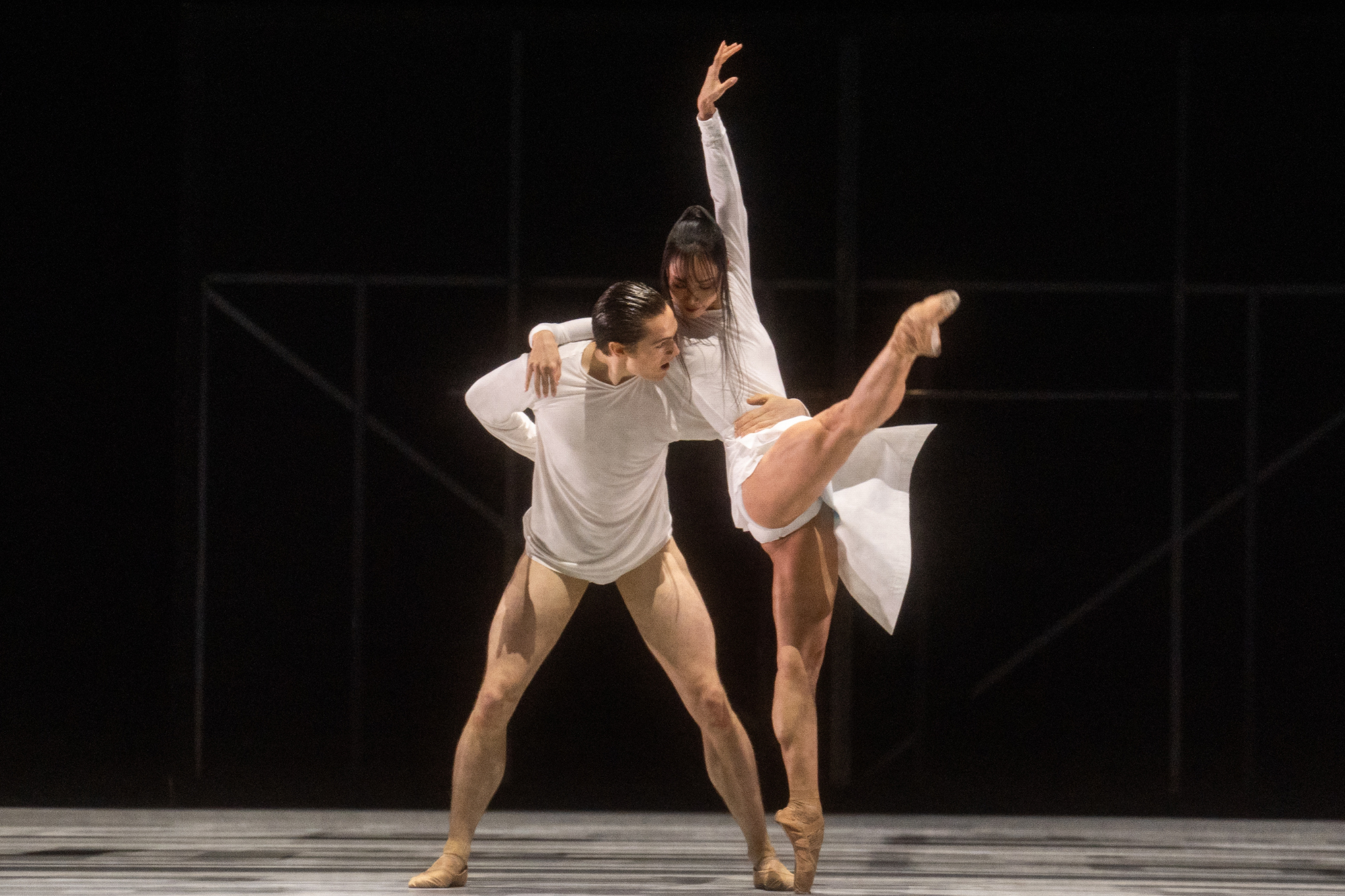MADDADDAM review: Wayne McGregor brings Margaret Atwood’s chaotic dystopia to the stage
McGregor’s epic adaptation of the author’s sci-fi trilogy is beautiful and exasperating in equal parts

You might wonder if, by making a ballet out of Margaret Atwood’s Oryx and Crake trilogy of dystopian sci-fi novels, Wayne McGregor was biting off more than he could possibly chew. On stage, The Royal Ballet’s MADDADDAM is a kaleidoscopic pileup of images and ideas - as if McGregor never met a rabbit hole he didn’t want to go down. It can be exasperating, beautiful, or just odd. The hubris is part of the point: MADDADDAM is about the need to tell stories, and the struggle to tell them.
The first act is full of chaos and plot. Joseph Sissens is Jimmy, one of the last human survivors of a global pandemic. He lives with the Crakers, a new race bioengineered by his dead friend Crake – a sleek, black-clad genius, elegantly danced by William Bracewell.
Jimmy is haunted by memories of Crake, and of Fumi Kaneko’s beautiful Oryx, Crake’s partner. Other survivors include Toby, an eco-pacifist danced by Melissa Hamilton; her friends; and a violent group of fashionista gangsters, dressed by Gareth Pugh in little fur jackets.
A co-production with the National Ballet of Canada, where it had its premiere in 2022, MADDADDAM layers sound and image from a starry creative team. Max Richter’s commissioned score flips between electronic crackle and sumptuous washes of strings, with sound design by Chris Ekers. Projected film by Ravi Deepres – riots, the natural world, a huge golden eye – floats on gauzes or on the egglike shapes of the set, designed by We Not I.
Voiceovers read snatches of Atwood’s text. When Sissens performs an angular solo to a dense summary of the plot so far, his bold dancing is overloaded by the storytelling framework. A scene with a Craker child is much stronger: Sissens pours out his steps, desperate to communicate, to pass on what he knows, even if the child can’t take it in.
Stepping away from the text, McGregor creates impressive dances. Kaneko shimmers in a gorgeous trio: with Jimmy, she’s radiant and idealised, before curling into sensuousness with Crake.

The second act retells the story as a video game – but, wonderfully, one that starts with serenity and joy. The same dancers float through Richter’s lyrical score, glowingly lit by Lucy Carter. As violence creeps up, the music tips into electronica, while steps speed into ferocious spinning turns.
For the third act, in the far future, McGregor creates exuberant steps for the evolved Crakers. They crouch and run, with delicate animalistic twitches and giddy, bounding moves. The story has become a religion: turning discarded clothes into puppets, characters tenderly re-enact scenes we’ve already seen. It’s both touching and unsettling, with moments of violence either unrecognised or simmering with threat.
McGregor ends the work with a serene, overlong finale; trying to wrap things up neatly, he falls into blandness. The mess is part of MADDADDAM: you can’t just leave it behind.
‘Maddaddam’ is at the Royal Opera House until 30 November



Join our commenting forum
Join thought-provoking conversations, follow other Independent readers and see their replies
Comments